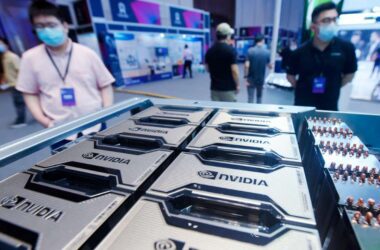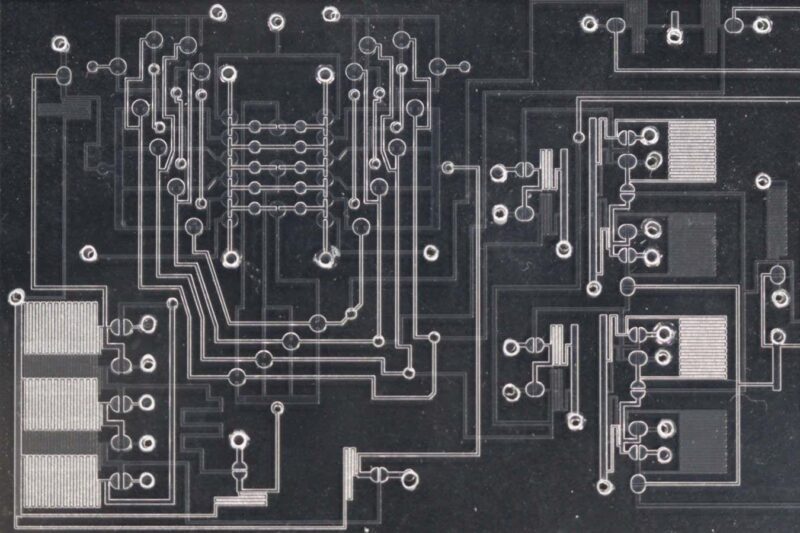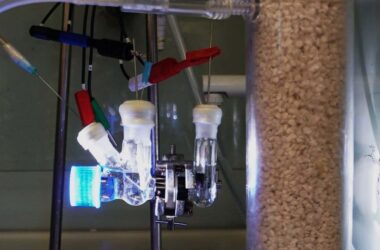A computer chip made of glass and silicone, with channels that hold liquidsHui Lab at UC Irvine
Data is encoded using pressure in a glass and silicone pneumatic computer. It can allow a tiny chip to do what would normally need a lab technician.
For decades, scientists have searched for compact, inexpensive, and easily transportable lab-on-a-chip devices to replace bulky glassware and laborious procedures for performing ordinary biochemistry. Growth of cell cultures and miniature organs are two examples of miniaturised biochemical studies, but most such devices require considerably more than just a chip.
Everything would be happening on the chip that you have in your palm, but when you zoom out, you’ll notice a box the size of a refrigerator is in charge of everything. According to Elliot Hui of the University of California, Irvine, “that’s not really lab-on-a-chip.” Together, he and his coworkers set out to find a way to replace that bulky unit with a computer so small it could fit inside a lab-on-a-chip.
They put a quarter-millimeter-thick silicone layer in between two sheets of glass. They drilled microscopic holes in the silicone layer between the two panes of glass to create passageways for the liquids used in the chemical processes.
Liquids were forced through the channels by pressure gradients, just as electricity is forced through wires in computer chips by voltage variations. In order to switch between low vacuum pressure (“1”) and atmospheric pressure (“0”), they inserted tiny valves the size of human hair. Because of this, the chip is now a pneumatic processor.
They utilised various silicone sheets as “punch cards” to write programmes, and they figured out a way to vary the pressure by placing their fingers over specific locations to input data.
The most complicated chip the group created included four bits of data and carried out a process called serial dilution, which is used to calculate the concentration of a chemical in a solution. The chip performed the task autonomously and in small, following pre-programmed instructions, when previously a researcher would have had to repeatedly pipette the liquid from one glass cylinder to another. According to Hui, existing so-called microfluidic devices, such as at-home covid-19 testing, may detect not only the presence or absence of a virus, but also its concentration, with the addition of a pneumatic computer chip.
Chip automation that requires no off-chip circuitry, according to William Grover of the University of California, Riverside, is extremely valuable. He claims that by using this method, the price of some microfluidic instruments can be reduced by 99 percent, while also making them more compact and straightforward to construct.
Albert Folch from the University of Washington in Seattle suggests this technology’s potential as a commercially available good in biomedicine for research requiring many variables, such as growing tissue on chips, if computing capabilities are sufficiently developed. He claims that current pneumatic computers’ computing ability is limited in comparison to that of electronic chips, but that this will change in the near future.
According to California State University, Long Beach researcher Siavash Ahrar, pneumatic computers have the potential to control miniaturised biochemical laboratories and serve as the “brains” for soft robots. Using air and pressure to move robots is nothing new, and now he claims it might be used to help robots make decisions using simple computations.
FAQs
Q1: What is a pneumatic computer?
A1: A pneumatic computer is a compact device that uses air pressure to perform tasks, similar to how traditional computers use electricity. It has the potential to revolutionize lab-on-a-chip devices and various fields.
Q2: How does a pneumatic computer work?
A2: A pneumatic computer utilizes pressure gradients to move liquids through channels in the device, similar to how electricity flows through wires in traditional computers. It can perform tasks autonomously and precisely.
Q3: What are the advantages of a pneumatic computer?
A3: Pneumatic computers offer compactness, automation, and cost reduction. They can replace bulky lab equipment and perform tasks on a microscale with minimal off-chip circuitry.
Q4: How is a pneumatic computer used in lab-on-a-chip devices?
A4: Pneumatic computers can control various biochemical processes on a tiny chip, making lab-on-a-chip devices more efficient and portable. They have the potential to revolutionize biomedicine and other fields.
Q5: What is the potential of pneumatic computers in robotics?
A5: Pneumatic computers could serve as the “brains” for soft robots, allowing them to make decisions using simple computations based on air and pressure technology.







